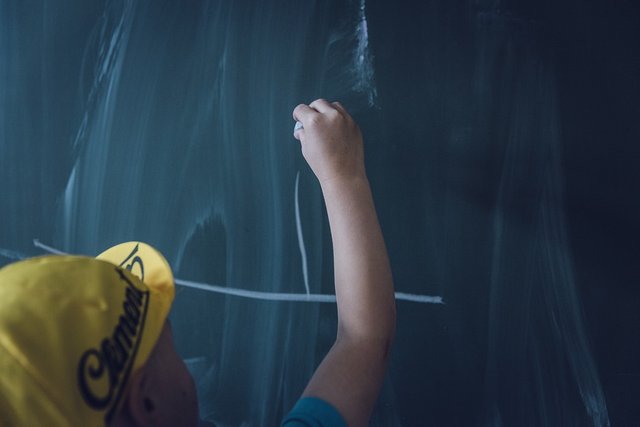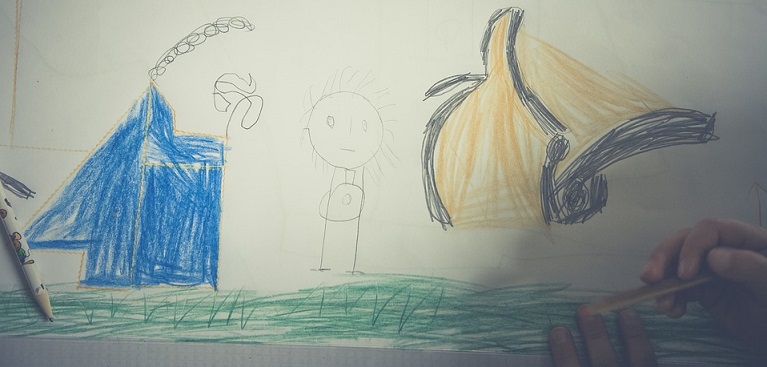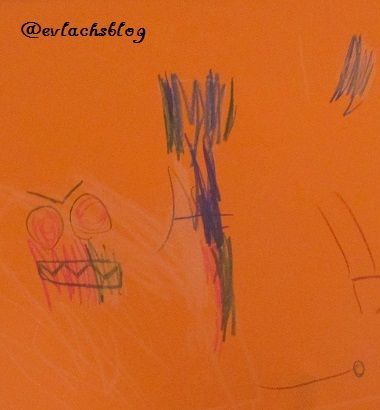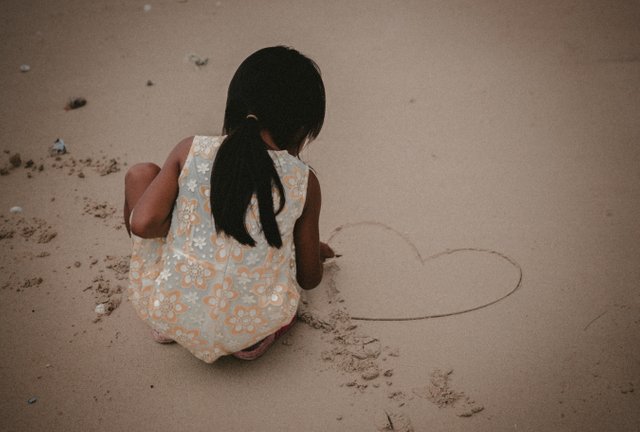How Young Children Communicate their Feelings and Thoughts through Writing

To the eyes of an adult, they are just wavy lines, or perhaps some swirly lines with sticks drawn at the bottom of that seemingly round shape, or, when somehow comprehensible, are just shapes that almost resemble letters or numbers. But for many children, those are their ways to communicate through their writing; hence, the beginning of their experimentation with the written language.
This form of communication is delightful to our eyes. We think that they are being playful (and they probably are), but to them, they are trying to make meaning of their world. They are making something and they want to communicate their thoughts and feelings through those marks on paper.
When children start to become fascinated with pencils and paper, they will begin to scribble. These scribbles look rather unintelligible to us, but do you know that they are actually exploring the effort it takes for them to control the writing tools? When their fine motor coordination becomes more developed, they will begin to write, or draw, shapes and patterns that are readily recognisable by adults.
Children will then begin to incorporate visual features of writing from these scribbles. They will understand that those marks on paper have meaning even though they cannot explain clearly what they have written or drawn. Then, later on, they will notice the features of letters, and soon they will start experimenting with their own written language.
In those experiments, children start to realise that their writing can be used to interact with others.
They use their writings to express feelings of appreciation and friendship.
One of our children in our Early Learning Centre loves to fold a paper in half. Inside that folded paper, she would draw love hearts, flowers (they look like flowers), clouds and stick people. After she'd finish drawing, she would show it to one of the teachers and say, "This is for Mrs. V." ~ That's what children call me. (Most of the time, her drawings are for her Mum or Dad or Nana, and other times, for her friends.)
Children also use writing to make meaning and label their world, and they use colours to represent their thoughts.
I observed one child just scribbling a combination of black and blue lines on his paper, so I asked him what he was drawing. He said, "It's a weather storm". I would not be able to guess that. Based on what he said, I could now interpret the meaning of his drawing: the black lines were the storm and blue lines were the sky.Through writing, children develop knowledgeable and confident self-identity.
Every time children see a letter that is the beginning letter of their name, they always claim that as their own. That the letter is theirs. "That's my name." Even when it is just a single letter written on a piece of paper. Even when they don't know how to write their full name yet, just the initial letter bears great importance in the way they communicate through their writing. They feel a sense of identity and pride whenever they write that initial letter and label their work, such as painting or art craft, with letters of their name.
When children begin to learn how to form letters and numbers, they often invent their own spellings or representations along the way.
Children form letters to "invent" which they think is the spelling of words or phrases, based on the sounds that those words make. For example, elfnt for elephant, or I lv u for I love you. Children construct their own rules on spelling with these efforts to communicate.
Parents, don't be disappointed that your children are still struggling to hold or grip a pencil, say, at 4 or 5 years old, let alone write and spell words. Don't try to rush them. There are developmental patterns in children's early mastery of writing and spelling, and these milestones vary among children and are not tied to age.

Children "write" or "draw" their own stories, that are products of their imaginative experience.
They may be trying to recreate the images or scenes they know from books that are being read to them, or TV programs and movies that they have watched, or even from pretend play that they played with other children. This is one reason why children are attracted to writing, so that they can enter the world of play and use this to communicate with their loved ones and friends.
Apart from what's already mentioned here, are there other ways that your children communicate to you through their writing? What do you do to support their writing at home? Please leave your comments or feedback below. I would love to know your insights and learn from your own experiences as well. Thank you!
Reference:
Neuman, S. (2007). Communicating through Writing. Early Childhood Today, the Magazine for Early Childhood Professionals, Vol. 21 No. 4: Scholastic Inc., NY

Who are you thankful for on Steemit?
Who do you appreciate?
Let that person know!!!
Join a contest hosted by my sister, @dynamicshine,
and win a prize of your choice.
https://steemit.com/dynamicgratitude/@dynamicshine/show-gratitude-for-someone-and-win-5-sbd-or-5-steem-basic-income-shares-pick-your-prize



Click the link to join our Discord and meet our founder and #1 minnows supporter, @dynamicgreentk.
Thank you @thundercurator for your thunder!
Banners credit to @baa.steemit.
Thank you @thundercurator for your thunder!
Banners credit to @baa.steemit.
So, come and join, and be inspired!!!
Check out posts by:
@dmilliz, @ryl, @dangerousangel, @scarletmedia, @puregrace, @pkalra, @honeychum, @joanna-godfrey, @udywriter, @shanu, @lantracy, @emilyandy, @bunnychum, @godsngh1, @ntowl, @norma-jean
Vote @curie, @scottcbusiness, @yabapmatt, @utopian-io, @hr1, @steemgigs (@surpassinggoogle), @cloh76.witness, @mahdiyari, and @pharesim as witnesses to let them know you support their work!




Very true! And in addition, Attentive Parents through observation can access their child thoughts through their writings and drawings. Psychology proves that children draw their fears as well as their interests and likes. If they love their parents, they draw a happy family picture. If they don't, maybe daddy bullies mum; they draw a picture that looks like a sad mum and angry dad...and probably, crying children.
That's the reason why psychiatrists that study children usually have lots of books and crayons in their office to help study and understand the children.
A beautiful writeup here @evlachsblog.
That's right. Children transfer their emotions into their drawings and yes, you're right, psychologists use this as a means to assess the emotional and mental state of the children. I can remember when I used to draw as a child, I would always draw 5 kids (which is me and my siblings) and my dad. My mother was always away.
Thank you @scarletmedia for your comment. It is also a good reminder for me to be more attentive and observant of my students' art work, such as painting and drawing, and their writing, too.
This is very interesting post.. I read full post very well..good job👍
Thank you for reading, @ajrazabin.
Children are just sponges at young ages and capable of so much more than many adults credit them for. That is why I am so disappointed many schools are giving up on the teaching of cursive. Kids will no longer even be able to read the documents of their forefathers. Sad..(and, I fear, not by accident.)
At the school where I teach, starting from Grade 4 level, children are taught cursive writing, but it is not strictly observed, I don't think. Which means, they are taught how to write in cursive, but then in other subjects, children write as they wish, and are allowed to submit their work, that is not in cursive writing.
Yes, children are sponges and they can learn anything so easily. That's why in my other posts, I explained how immersing them in a language whilst they're young can help build their fluency in that particular language.
Great info
Thank you.
Very beautiful indeed!
Thank you @socialreformer.
Congratulations! This post has been upvoted from the communal account, @minnowsupport, by evlachsblog from the Minnow Support Project. It's a witness project run by aggroed, ausbitbank, teamsteem, theprophet0, someguy123, neoxian, followbtcnews, and netuoso. The goal is to help Steemit grow by supporting Minnows. Please find us at the Peace, Abundance, and Liberty Network (PALnet) Discord Channel. It's a completely public and open space to all members of the Steemit community who voluntarily choose to be there.
If you would like to delegate to the Minnow Support Project you can do so by clicking on the following links: 50SP, 100SP, 250SP, 500SP, 1000SP, 5000SP.
Be sure to leave at least 50SP undelegated on your account.
This post is resteemed and upvoted by @bestboom
great article, very interesting! I'll have to keep that in mind when I have children one day
Thank you for your feedback. I am not a parent myself, but it's a great learning experience to put this lesson into practice in my role as a preschool teacher.
Resteemed by @pillsjee! Good Luck!
Check @pillsjee for most affordable Resteem service to make your post more popular!